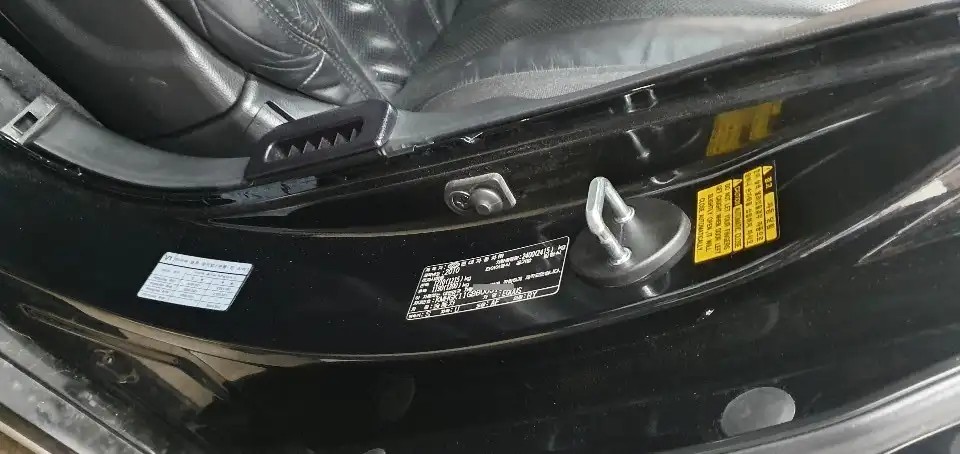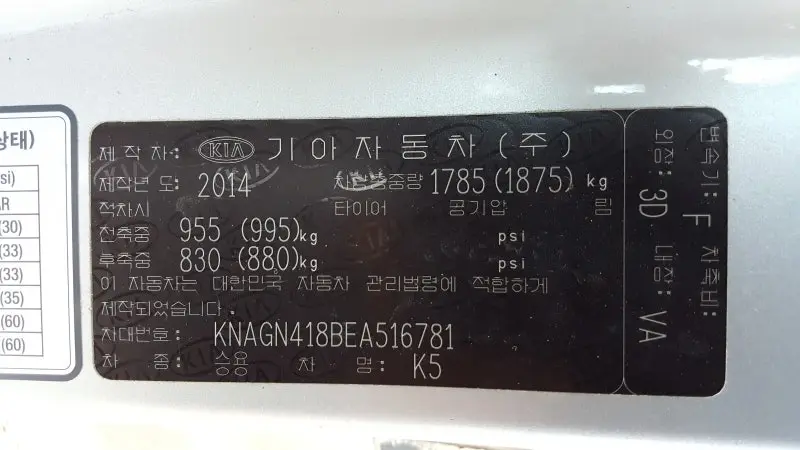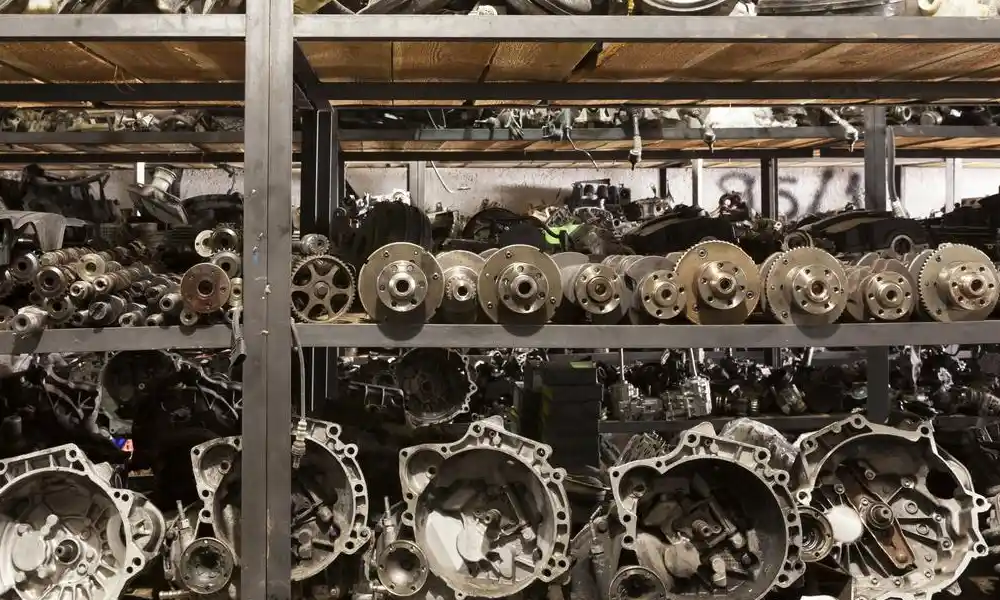To read the VIN sticker on Korean used cars, locate the 17-character code on the driver’s door frame or dashboard. The code reveals the manufacturer, engine type, model year, and serial number. Always verify the sticker matches the registration and stamped VIN.
UsedCarKorea.com
If you’re buying a Korean used car, knowing how to read the VIN sticker is essential. This 17-character code holds key information like the manufacturer, model year, and engine type. In this guide, we’ll show you exactly how to decode a VIN sticker on Korean used cars for smarter purchases.
Table of Contents

What is a VIN Sticker?
A VIN sticker is a label that displays the Vehicle Identification Number (VIN)—a unique 17-character code assigned to every vehicle. This alphanumeric code acts as the car’s fingerprint, revealing information such as the manufacturer, model, engine type, year of production, and place of assembly.
Where to Find the VIN Sticker in Korean Used Cars
Korean cars usually have two forms of VIN markings:
- A VIN sticker, typically located on the driver-side door frame, the B-pillar, or occasionally on the rear side window.
- A stamped VIN, etched into permanent body parts such as the engine firewall, dashboard near the windshield, or front chassis rail.
- The VIN is also printed on the vehicle registration certificate.
Structure of the 17-Character VIN
The VIN is divided into three major sections:
a. WMI (World Manufacturer Identifier – Characters 1–3)
- The first character indicates the region or country of manufacture. Korean-made vehicles often begin with KM, KN, KL, or KNA.
- The second and third characters identify the vehicle manufacturer:
- KMH = Hyundai
- KNA = Kia
- KL1/KL3 = GM Korea (Chevrolet)
b. VDS (Vehicle Descriptor Section – Characters 4–9)
This segment provides details about the vehicle’s:
- Body type
- Engine type
- Transmission system
- Safety systems
- Vehicle model
The 8th character usually indicates engine type. The 9th character is often a check digit used to validate the VIN.
c. VIS (Vehicle Identifier Section – Characters 10–17)
- The 10th character represents the model year of the vehicle (e.g., K = 2019, M = 2021).
- The 11th character shows the manufacturing plant code.
- The last six characters represent the serial number assigned during production.
How to Decode a VIN Sticker on Korean Cars
When reading a VIN sticker, here’s how to interpret it:
- WMI (First 3 characters): Tells you the car’s country of origin and manufacturer.
- VDS (Characters 4–9): Reveals model details such as body style, engine type, and transmission. Each manufacturer has unique codes.
- VIS (Characters 10–17):
- 10th character: Model year.
- 11th character: Factory code.
- 12th–17th characters: Vehicle’s unique serial number.
This information can be used to check the car’s specifications, verify authenticity, and access maintenance or accident history.
5. Why the VIN Sticker is Important
- Verification: Ensures that the VIN sticker matches the stamped VIN and the VIN on the registration document. Any mismatch may indicate tampering or theft.
- Vehicle History Reports: By entering the VIN into services like Carfax or Korean equivalents, you can uncover past accidents, title records, and mileage logs.
- Parts Compatibility: When replacing car parts or paint, knowing the exact model and engine type from the VIN helps ensure accurate matching.
Tips for Inspecting a Korean Used Car
- Always compare the VIN on the sticker, stamped VIN, and vehicle registration document—they must all match.
- Look closely at the VIN sticker for signs of tampering, such as scratches, peeling, inconsistent fonts, or mismatched glue marks.
- Use a reliable VIN-check website or app to validate vehicle history, recall status, and potential odometer rollbacks.
VIN Breakdown Reference Table
| VIN Segment | Characters | What It Reveals |
|---|---|---|
| WMI | 1–3 | Country & Manufacturer |
| VDS | 4–9 | Model, Body, Engine, etc. |
| VIS | 10 | Model Year |
| 11 | Plant Code | |
| 12–17 | Serial Number |
Final Thoughts
Reading the VIN sticker on a Korean used car can tell you more than just a number—it unlocks the vehicle’s full background. Whether you’re checking for fraud, confirming specs, or shopping for the right spare parts, understanding the VIN sticker is essential for making an informed and confident used car purchase.

FAQs
Where is the VIN sticker located on Korean used cars?
The VIN sticker is typically found on the driver-side door frame, dashboard near the windshield, or the B-pillar. Always confirm it matches the stamped VIN and registration to avoid fraud when buying Korean used cars.
How do I decode a Korean car VIN number?
To decode a VIN sticker on Korean used cars, break the 17-digit code into three parts: WMI (origin/manufacturer), VDS (model/engine), and VIS (year/serial). Use online Korean car VIN decoder tools for quick checks.
What does the 10th character in a VIN mean on Korean cars?
The 10th character of the VIN sticker reveals the model year of the Korean used car. For example, ‘K’ means 2019, ‘M’ means 2021. Always check this when verifying car history.
Why is reading the VIN sticker important when buying Korean cars?
The VIN sticker helps verify a Korean used car’s authenticity. It confirms the model year, manufacturer, and engine details. It’s key to spotting mismatches or tampering in used car purchases.
Can I check Korean used car history with the VIN?
Yes, by using the VIN sticker on Korean used cars, you can access accident records, mileage data, and recall info through Korean or international VIN check platforms.


